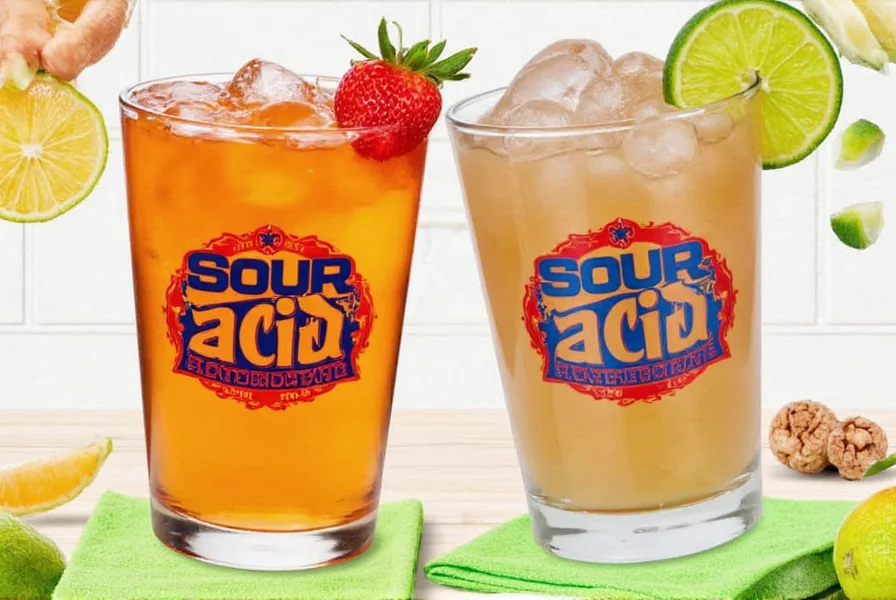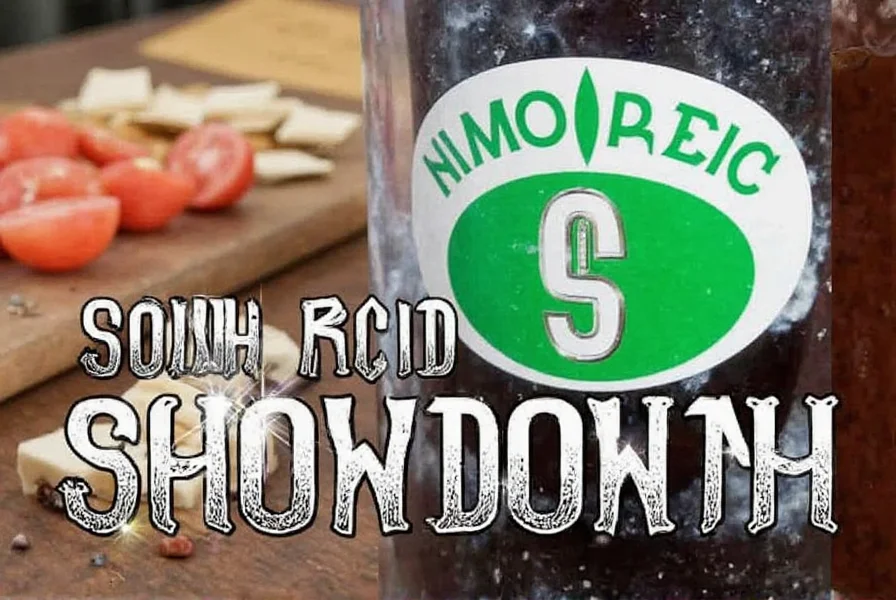Sour acid refers to naturally occurring organic acids that create a tart or acidic taste in food. These acids, such as citric acid in lemons and acetic acid in vinegar, are essential for balancing flavors, enhancing other tastes, and preserving food. Whether you're a home cook or professional chef, understanding sour acids can transform your dishes from ordinary to extraordinary.
From natural sources like citrus to fermented powerhouses like vinegar, we'll dive deep into the world of tart sensations. Along the way, you'll find practical tips, clever comparisons, and even a handy buying guide to help you choose the perfect sour companion for your kitchen arsenal.
Table of Contents
- What Exactly Is Sour Acid?
- Why Sour Acid Matters in Cooking
- Types of Sour Acids & Their Flavor Profiles
- How to Use Sour Acids Like a Pro
- Buying Guide: Finding the Right Sour Acid for You
- Frequently Asked Questions
- Final Thoughts
What Exactly Is Sour Acid?
Let's get scientific (but keep it light). Sour acid refers to compounds that activate our taste buds to perceive the flavor of sourness. In food terms, this includes naturally occurring organic acids like citric acid (lemon), acetic acid (vinegar), tartaric acid (wine), and lactic acid (yogurt).

The presence of these acids not only adds brightness but also helps balance richness, enhance other flavors, and preserve foods — making them essential players in any flavor game.
Why Sour Acid Matters in Cooking
If sweetness makes us smile and saltiness makes us crave, then sourness? That's the wake-up call your palate never knew it needed.
- It brightens up heavy dishes
- Enhances umami and savory notes
- Acts as a natural preservative
- Can cut through fatty ingredients
Imagine a rich curry without a squeeze of lime, or a sweet dessert that doesn't offer a tangy counterpoint — yawn city!
Types of Sour Acids & Their Flavor Profiles
Not all sour acids are created equal. Let's break down the most common ones, their characteristics, and when to use them:
| Name | Source | Taste Profile | Best For |
|---|---|---|---|
| Citric Acid | Lemon, lime, oranges | Fruity, sharp, refreshing | Marinades, desserts, cocktails |
| Acetic Acid | Vinegar (apple cider, white wine) | Strong, pungent, earthy | Pickling, salad dressings, sauces |
| Tartaric Acid | Grapes, wine | Wine-like, creamy acidity | Sauces, reductions, cheese pairings |
| Lactic Acid | Fermented dairy (yogurt, sour cream), kimchi, sauerkraut | Smooth, mellow, slightly creamy | Dips, marinades, fermented dishes |
| Malic Acid | Apples, cherries, rhubarb | Sharp, fruity, green apple-like | Baking, fruit preserves, candies |
How to Use Sour Acids Like a Pro
Want to take your cooking from good to "Holy zing, Batman!"? Here are some expert-approved tricks using sour acid:
- Balance Fatty Dishes: A drizzle of balsamic vinegar over a steak or a dollop of yogurt on a spicy curry can cut through richness like a knife.
- Enhance Marinades: Citrus juice or vinegar tenderizes proteins while infusing flavor. Try lemon-garlic marinade for chicken or tofu.
- Add Dimension to Desserts: Lemon curd, passionfruit reduction, or a splash of verjus can turn an overly sweet dessert into a symphony of flavors.
- Preserve with Pickling: Vinegar-based brines can keep veggies crisp and flavorful for weeks. Cucumbers, onions, carrots — all fair game.
- Boost Fermented Foods: Sauerkraut, kimchi, or sour pickles rely on lactic acid for that tangy depth. Add a spoonful to tacos or sandwiches for instant flair.
Buying Guide: Finding the Right Sour Acid for You
Shopping for sour acids can be overwhelming with so many options lining the shelves. Here's your cheat sheet to finding what suits your style:
For the Everyday Cook
- White Vinegar: Affordable and versatile, ideal for pickling, cleaning, or quick dressings.
- Lemon Juice (Fresh or Bottled): Bright and easy to use; fresh is best, but bottled is great for convenience.
For the Flavor Explorer
- Apple Cider Vinegar: Offers a mild tang with a hint of fruitiness; perfect for vinaigrettes and wellness shots.
- Sherry Vinegar: Rich and complex; excellent for deglazing pans or finishing dishes.
For the Fermentation Fanatic
- Kombucha: While not technically an acid itself, kombucha contains acetic and gluconic acids and brings a unique funky-tangy note.
- Yogurt or Lassi: Great for Indian or Middle Eastern-inspired dishes; adds creaminess and subtle sourness.
For the Sweet Tooth
- Lime Curd: A thick, tangy spread made with lime juice and butter — ideal for tarts or layer cakes.
- Meyer Lemon Extract: More floral than regular lemons; perfect for baking and desserts.
Final Thoughts
Sour acid isn't just about puckering your lips — it's a powerful tool that unlocks layers of flavor and makes every bite more dynamic. Whether you're working with fresh lemons or aged vinegars, understanding how each type of acid behaves can elevate your cooking to a whole new level.

So go ahead, experiment with different acids, mix them up, and don't be afraid to push boundaries. After all, the world of flavor is meant to be explored — one deliciously tangy bite at a time.











 浙公网安备
33010002000092号
浙公网安备
33010002000092号 浙B2-20120091-4
浙B2-20120091-4